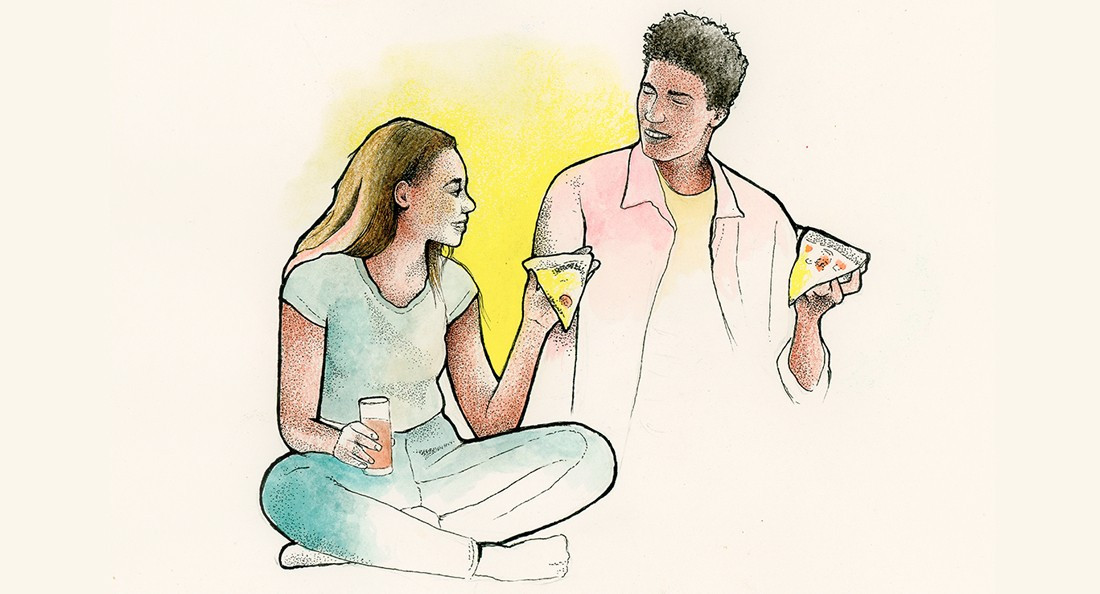Feeding Diaspora
Turmeric stains and other interventions by Artists of Colour
I first became enthralled with the concept of leaving traces in public space when Chilean-Canadian ceramics artist Monica Martinez told me about her time in art school.
Working with Albertan red terracotta clay (alongside or instead of European white porcelain), Martinez would leave handprints on her canvas, on her table and on random walls around the University of Manitoba to claim space and speak to colonialism and hierarchy.
The trace of a red-brown imprint juxtaposes the perceived purity of white porcelain. In a clean, white institution, it makes visible the tensions experienced by Students of Colour and the legacy of colonialism and oppression that continues.
I hold Martinez’s gesture as a subtle act of reclamation and resistance in an art world that often feels elitist, inaccessible and uncritical for People of Colour.
Countering this, what does the ideal artist-run centre look like?
This is a question curator and scholar Noor Bhangu asked of her participants during a series of events she organized at Latitude 53 (in Edmonton) titled “Has The Community Been Fed?” As the curator-in-residence, Bhangu facilitated public dialogues as a part of her research for her upcoming exhibition on utopia, desire, histories of oppression and hopeful futures.
Motivated by hospitality and exchange, Bhangu spoke with me about how serving food and cooking together created a communal space.
“I like to offer something rather than just extract energy and insights from participants,” Bhangu says. “Plus, it speaks to my discomfort in Western institutionalized spaces and the various hierarchies at play between staff, artists/curators and the public.
“Everything is turmeric-stained now. I left a colourful imprint – and the gallery staff ate well for the next week.”
Turmeric is a basic ingredient for Indian cooking, and leaving traces of the spice behind was a happy accident for Bhangu, who appreciates the yellow-orange residue in an institutional setting.
As a Brown diasporic woman, Bhangu’s research interests are practiced in the way she moves through community. Applying her Sikh Indian family values to the public art community paves way for more authentic connection and nonconventional, multidirectional modes of learning.
To alter ergonomics, Bhangu placed a rug in the space to encourage floor seating, in addition to the chairs. Facilitating small group discussions enabled her to refill plates, visit with people, guide conversations and thread themes together.
Bhangu says that one participant spoke of Seva, the Sikh and Punjabi practice of making sure others are well-fed and comfortable in your space, as the ideal artist-run centre.
“He described the perfect institution as having four doors, meaning it is an open, inclusive, generous and kind space. Seva is while you’re seated on long mats and someone comes around to give you food.”
The way Bhangu’s values and practices became echoed in the conversation struck me. By understanding herself as both guest and host and destabilizing the relations in the room, Bhangu embodied and enabled non-hierarchical community-building.
This sincerity, generosity and thoughtfulness is necessary for People of Colour to thrive in an individualistic, competitive, ableist, neoliberal art world.
Although events and conversations are ephemeral, surfaces are washed, and space is reoriented, when Artists, Curators and Art Facilitators of Colour claim and make space, their impact is empowering and reverberating.
Resilience and co-liberation is the welcoming embrace of a willful hand, a slippery trace saturated with colour, an offering of food to plates.
Christina Hajjar is a first-generation Lebanese-Canadian pisces dyke ghanouj with a splash of tender-loving rose water and a spritz of existential lemon, served on ice, baby. Catch her art, writing and organizing at christinahajjar.com or @garbagebagprincess.
Published in Volume 74, Number 15 of The Uniter (January 23, 2020)







